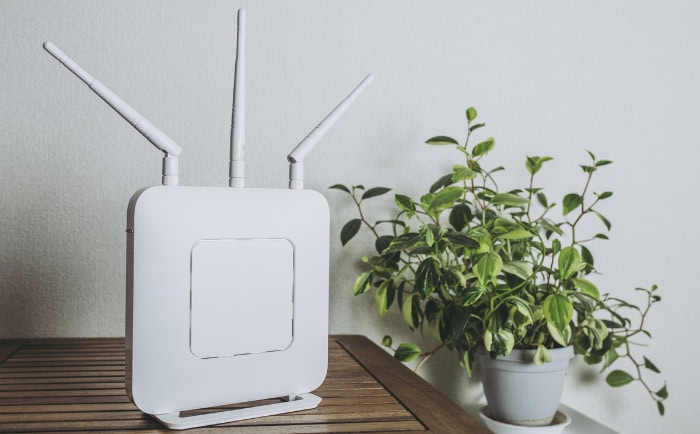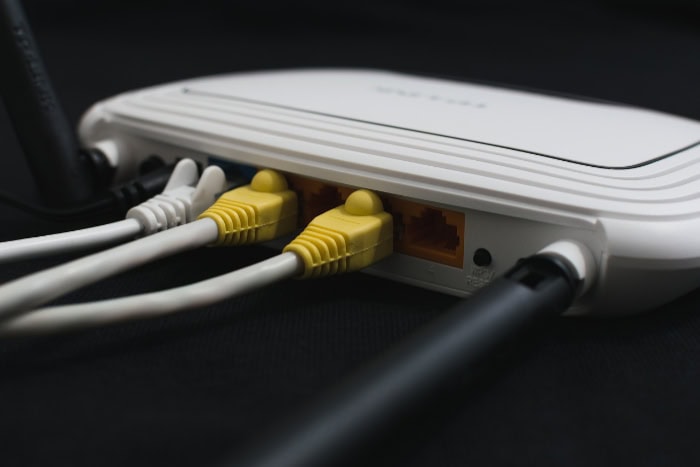Upload Speed Faster Than Download Speed? Find the Culprit

You just ran an internet speed test, and the results look backward: your upload speed is faster than your download. This is an unusual outcome, since most internet plans are designed for consumption.
We spend our time streaming shows, loading web pages, and downloading large files, so providers give us much more download bandwidth. Uploading, like sending an email or posting a photo, typically requires far less.
Seeing this pattern reversed can be confusing. While it can be normal for specific fiber optic services, it often points to a problem.
Why It Happens
When your upload speed surpasses your download speed, the cause typically falls into one of three categories. The issue may originate from conditions on the broader internet, factors within your own home network, or the specific way your internet service is designed and delivered.
Pinpointing the source requires looking at each of these areas.
External Network and Server Conditions
Your internet connection is part of a massive, shared network, and its performance can fluctuate based on external factors. Peak-time congestion is a primary culprit.
During evenings and weekends, when many people are streaming and downloading, the available download bandwidth in your area can become saturated. Since fewer people are uploading large amounts of data, the upload channels remain relatively clear, causing a temporary imbalance in speed tests.
The issue could also be routing inefficiencies, where the data from your test server takes a less direct or more congested path to reach you. Finally, the speed test server itself may be a bottleneck, having more capacity to receive data from you than to send it back.
Your Home Network Environment
Sometimes the problem is much closer to home. Your local network setup can create a bottleneck that specifically limits download speeds.
Wi-Fi interference from your neighbors’ networks, microwaves, or other electronics can disrupt your download signal more than your upload signal. Router settings like channel width and security modes can also impact performance.
For example, using a narrow channel or an older security protocol may limit throughput. Another potential cause is a Quality of Service (QoS) rule on your router, which might be configured to prioritize upload-heavy applications like video conferencing or online gaming.
Outdated network drivers on your computer can also fail to manage incoming traffic effectively, creating a download-specific slowdown.
Internet Service and Plan Configuration
The design of your internet service plays a significant role. Your provider’s plan provisioning dictates the maximum theoretical speeds for your connection.
If there is a misconfiguration on their end, your download speed might be capped incorrectly. The access technology itself also imposes limits.
Cable internet, for instance, dedicates most of its channels to downloads, but technical issues can sometimes compromise those specific channels while leaving upload channels unaffected. Lastly, some providers use traffic shaping or prioritization to manage their network.
During times of high demand, they might slow down certain types of download traffic, like large file transfers, which would not affect your upload performance.
How to Diagnose

To figure out why your download speed is lagging behind your upload speed, you need to become a detective. A systematic approach to troubleshooting can help you narrow down the possibilities and identify whether the root cause is your equipment, your provider, or external network conditions.
The goal is to eliminate variables one by one until the problem becomes clear.
Isolate Variables to Pinpoint the Problem
Start by isolating the most common points of failure. First, compare a speed test run over Wi-Fi with one run on a computer connected directly to your router with an Ethernet cable.
If the Ethernet connection is fast and stable, the problem is almost certainly related to your wireless network. Next, run tests on multiple devices, like a laptop and a smartphone.
If only one device shows slow downloads, the issue likely lies with that specific device’s hardware or software. Finally, use different speed test servers.
Most testing websites let you choose a server in a different city. If speeds improve dramatically with another server, the original one might be overloaded or poorly routed.
Test Methodically for Consistent Data
A single speed test is just a snapshot in time. To get an accurate picture, you must test methodically.
Run tests at various times of the day, such as in the morning, mid-afternoon, and during the evening peak period around 8 PM. This helps reveal patterns that point toward network congestion in your neighborhood.
Be sure to record your results each time, noting the date, time, server used, and whether you were on Wi-Fi or Ethernet. Having this data creates a clear and credible record of the performance issue, which will be invaluable if you need to contact your internet service provider for support.
Inspect Your Device and Router Configurations
If initial tests suggest the problem is within your home, it is time to inspect your setup. Begin by checking for driver updates for your computer’s network interface card (NIC) and Wi-Fi adapter, as outdated drivers can cause performance bottlenecks.
Temporarily disable your firewall and antivirus software and run another test; sometimes, overzealous security programs can interfere with download traffic. Log in to your router’s administration panel and look for Quality of Service (QoS) settings.
A misconfigured rule might be prioritizing other traffic over your downloads. Also, double-check your router placement.
Ensure it is in a central location, away from walls and appliances like microwaves that can cause interference.
Practical Solutions

After diagnosing the source of your speed imbalance, you can take direct steps to resolve it. The right fix depends on your findings, with solutions ranging from simple adjustments within your home network to coordinating with your internet service provider or even reevaluating your internet plan.
Optimize Your Local Network
If your tests indicate the bottleneck is inside your home, start by optimizing your local area network (LAN). For Wi-Fi issues, log in to your router’s administrative settings and try changing the Wi-Fi channel to one with less interference from neighboring networks.
You can also experiment with the channel width, as a wider channel can be faster but is more susceptible to interference. Ensure you are using a modern security mode like WPA2 or WPA3, because older protocols can limit speed.
The physical router placement is also crucial; move it to a central, elevated location away from walls and electronics. For the best performance, use Ethernet connections for stationary devices like desktop computers, gaming consoles, and smart TVs to bypass wireless issues entirely.
Coordinate With Your Internet Provider
When your troubleshooting points to an external problem, your internet service provider (ISP) is your next call. Start by asking them to verify the provisioning for your account to ensure your service plan is configured correctly in their system.
If you have recorded data showing consistent slowdowns, report the congestion patterns to them. This information can help their network engineers identify an overloaded node in your area.
You can also request a line check to test the signal integrity from their network to your modem. Finally, ask if there are any pending firmware updates for your modem or router, as new software can fix known performance bugs.
Choose the Right Internet Plan
Sometimes, the issue is not a technical problem but a mismatch between your internet plan and your usage needs. If your work involves frequent video conferencing, large cloud backups, or content streaming, an asymmetrical plan may be holding you back.
In these cases, consider upgrading to a symmetrical fiber plan that offers identical upload and download speeds. If fiber is not available in your area, moving to a higher tier of your existing service can still provide relief.
A plan with a higher download ceiling gives you more bandwidth to work with, which can help mitigate the effects of local network congestion and support more devices at once.
Conclusion
Seeing an upload speed that outpaces your download is an uncommon result that can be expected in specific contexts, like with a symmetrical fiber connection, but it more often points to a constraint throttling your download performance. The issue could be temporary network congestion, a misconfiguration within your home, or a service-side problem.
Addressing it effectively requires a systematic approach. First, validate your immediate environment by testing over Ethernet and checking your router's settings to rule out local issues.
If the slowdown persists, use your collected data to report the pattern to your internet provider. Finally, make sure your internet plan truly aligns with your actual usage, as your daily activities may require a more robust or symmetrical connection than you currently have.


